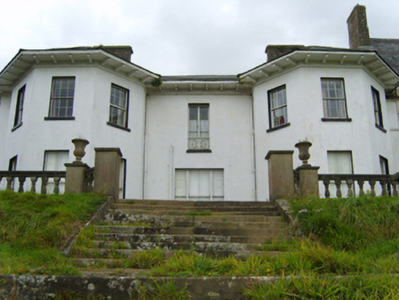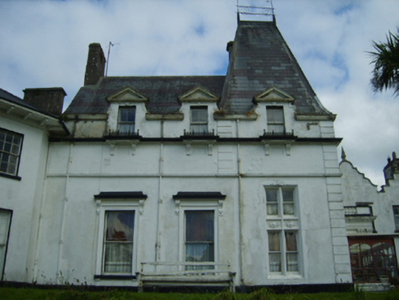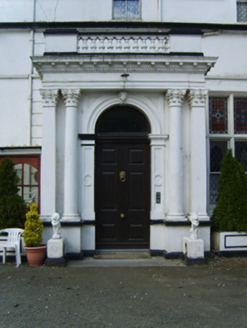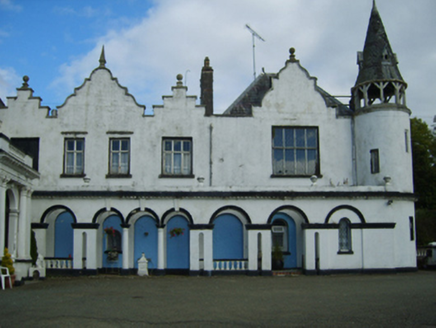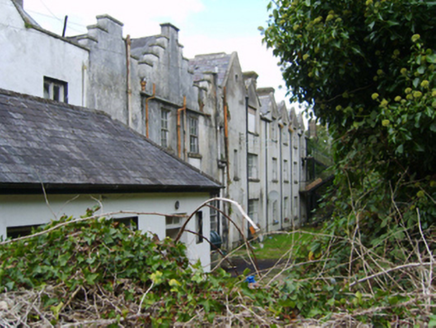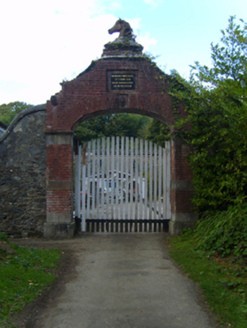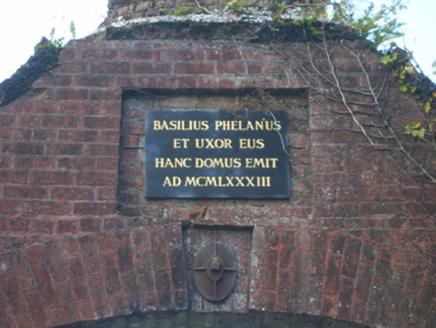Survey Data
Reg No
15700711
Rating
Regional
Categories of Special Interest
Architectural, Artistic, Historical, Social
Original Use
Country house
Historical Use
College
In Use As
Country house
Date
1799 - 1820
Coordinates
315650, 161503
Date Recorded
27/09/2007
Date Updated
--/--/--
Description
Detached three-bay (two-bay deep) two-storey country house, extant 1820, on a U-shaped plan with single-bay full-height bows on engaged half-octagonal plans. Extended, 1868. Sold, 1870. Extended, 1872-3. Sold, 1890. Resold, 1895. Occupied, 1901. In occasional use, 1911. Sold, 1936, to accommodate alternative use. Resold, 1983. "Restored", 1990. Hipped slate roof on a U-shaped plan with half-octagonal slate roofs (bows), roll moulded clay ridge tiles, rendered chimney stacks on rendered bases on axis with ridge having thumbnail beaded stringcourses below capping, and remains of cast-iron rainwater goods on timber eaves boards on overhanging eaves having timber consoles retaining cast-iron downpipes. Replacement rendered walls on rendered chamfered plinth with concealed cut-granite flush quoins to corners. Remodelled square-headed central window opening in tripartite arrangement with timber mullions, and concealed red brick block and start surround framing two-over-two timber sash window without horns having one-over-one sidelights. Square-headed window opening (first floor) with cut-granite sill, and concealed red brick block-and-start surround framing timber casement windows behind cast-iron balconette. Square-headed window openings (bows) with cut-granite sills, and concealed red brick block-and-start surround framing two-over-two (ground floor) or six-over-six (first floor) timber sash windows without horns. Set in landscaped grounds including terraces centred on flights of ten lichen-covered cut-granite steps.
Appraisal
A country house erected for Stephen Ram MP (1744-1821) representing an important component of the domestic built heritage of north County Wexford with the architectural value of the composition, one succeeding an eighteenth-century house destroyed by insurgents following the defeat of Colonel Lambert Theodore Walpole (1757-98) at Toberanierin (Lewis 1837 I, 665), confirmed by such attributes the deliberate alignment 'commanding an extensive view [of] a noble deer-park [and a] finely wooded and watered demesne' (Wilson 1820, 432); the symmetrical footprint centred on a much-modified doorcase; the diminishing in scale of the openings on each floor producing a graduated visual impression with the principal "apartments" defined by polygonal bows; and the decorative timber work embellishing a slightly oversailing roofline: meanwhile, aspects of the composition clearly illustrate the continued development or "improvement" of the country house as an extraordinary architectural "mélange" with those works attributed to Thomas Henry Wyatt (1807-80) of London working (1868) in a "François Premier" style; and Benjamin Thomas Patterson (1837-1907) of Dublin working (1872-3) in an Italianate Tudor style (Williams 1994, 380). Having been reasonably well maintained, the elementary form and massing survive intact together with substantial quantities of the original fabric, both to the exterior and to the interior, including crown or cylinder glazing panels in hornless sash frames: meanwhile, contemporary joinery; an arcaded staircase hall attributed to John McCurdy (c.1824-85) of Dublin (O'Dwyer 1989, n.p.); Classical-style chimneypieces; and decorative plasterwork enrichments, all highlight the artistic potential of a country house having historic connections with the Ram family including Abel Ram (c.1775-1832), one-time High Sheriff of County Wexford (fl. 1829); and Stephen Ram DL (1818-99) 'whose debts…were largely due to the more than princely style of his dealings with architects' (Bassett 1885, 363-5); William Millar Kirk (d. 1884), 'late of The Park Gorey County Wexford' (Calendars of Wills and Administrations 1884, 416); and Sir George Errington MP (d. 1920), one-time High Sheriff of County Wexford (fl. 1901).

